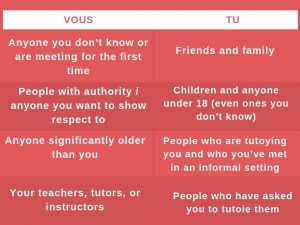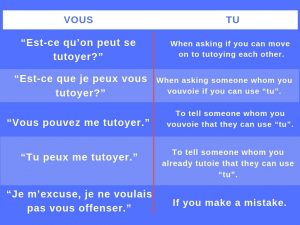The post SLOWRUSH – BRITPOP FROM BORDEAUX appeared first on Bordeaux Expats.
]]>There’s a new band in town with a distinctively 21st-century Britpop feel. Please give a big hand to Slowrush, whose debut release, The Parallel World E.P, is available now on all streaming platforms.
The Bordeaux-based trio features Englishman Tim Pike on vocals and guitar. Tim’s adventures have regularly
cropped up on Bordeaux Expats, mainly because of his Invisible Bordeaux online guide to lesser-known
sights and stories in the area. With Slowrush he is drawing on years spent listening to classic British artists
such as Blur, XTC and Joe Jackson, to create songs that have been built around timeless mainstays such as
catchy tunes, verses, choruses and middle eights!
His son Dorian is on drums, bringing a refreshing millennial touch to proceedings, citing influences including
Everything Everything, Foals and Tame Impala. On bass, Olivier Rols has a enviable track record in local
bands and is equally at home playing rock, jazz and even punk!

The band’s first E.P. comprises four songs: Parallel World, all about the desire to be able to bottle dreams
and use them in real life; Mr Morality, which is a polite word of warning to overbearing parents; Bordeaux
Watergate is inspired by a long-forgotten scandal in the 1970s wine scene; and Four Walls reflects on the
magical nature of the buildings and places that surround us, in Bordeaux as elsewhere!
Slowrush hope to be able to perform live as soon as the concert scene picks up again, and more songs will
be released over the coming months. In the meantime, check out The Parallel World E.P. on Spotify, Deezer,
Apple Music, Bandcamp and elsewhere. A CD version of the E.P. is also available directly from the band. And
you can follow the band’s adventures on Instagram, Twitter and Facebook!
Find Slowrush’s “The Parallel World E.P.” on the streaming app of your choice here.
Contact : Tim Pike > slowrushband@gmail.com
The post SLOWRUSH – BRITPOP FROM BORDEAUX appeared first on Bordeaux Expats.
]]>The post THE ART & CRAFT OF BREAD MAKING appeared first on Bordeaux Expats.
]]>Author: Viktorija Todorovska for Fines Bouches Magazine
Bread is such an intrinsic element of French food culture that recently, French President Emmanuel Macron suggested baguette should be added to the UNESCO List of Intangible Cultural Heritage, which aims to protect traditions, such as music, dance, and cuisine, from the effects of globalisation.
French artisan bakers think that in addition to the name and shape, it is the ingredients and recipe of baguette that should also be protected. Mass-produced imitations, often made outside of France, threaten this centuries-old tradition.
A 1993 law specifies that traditional baguette cannot contain anything other than wheat flour, yeast, water, and salt. But even with these four ingredients specified, there is a world of difference in the texture, colour, and taste of a supermarket baguette and one made by an artisanal Boulanger.
So, what transforms these four simple ingredients into the crusty, delectable loaves that bakers worldwide aspire to?
Predictably, when a recipe is this simple, it is the quality of the ingredients that makes the difference between a mediocre product and an exceptional one. The ingredients must be fresh and of high quality to yield the crusty yet chewy perfection the world admires.
Another essential element is the know-how of the baker. Anyone who has tried to make bread at home knows how quickly this seemingly simple pursuit turns into hours and hours of research, dozens of attempts, many phone calls to friends and more than one loaf of inedible dough. Which is why a great boulangerie, one that consistently crafts loaves with a crusty outside and a chewy middle, is worth seeking fervently.
Michel Fiori’s boulangerie in Nice won the title of best boulagerie on M6.
When asked what his secret to great bread is, Fiori shrugs his shoulders and says simply,
“Time… we work with time. It takes us 20 hours to make a baguette.”
Twenty hours?!?
Yes, because the few simple ingredients he starts with need time to develop and achieve the complexity of flavor and the texture of a perfect baguette.
Each ingredient plays an important role.
The flour provides the carbohydrates used for fermentation and the proteins (gluten) that give the bread texture. Depending on the type of flour, the dough rises differently and gives bread with different textures.
Fiori uses only selected flours, with no additives or stabilisers. Pure grains, grown in a way that respects the environment. His preferred are Farine Label Rouge, a premium flour that gives the bread depth of flavor and also is environmentally friendly, and CRC (Culture Raisonée Controlée) flour, produced from 100% French grains of high quality in a way that benefits both humans and nature. The mills he buys his flours from only work with artisanal boulangers, not large distribution. That way, they can make great flour in a sustainable way.
To these high quality flours, Fiori adds very little yeast, only 1% (10 grams per kilo of flour) and 10% leavening (100 grams per kilo of flour). The leavening causes the fermentation that creates bubbles of CO2, which cause the bread to rise. Water brings it all together enabling the unravelling of the process of fermentation.
First the ingredients are mixed together in a large bowl and the dough is kneaded.
This seems like a simple step but it all starts here: the type and quality of the flour determines the intricacies of this part of the process. To make great bread, this step must be executed with precision and know-how: the baker needs to know the ingredients, how they interact, and how those interactions might change depending on weather and other conditions. He needs to also be able to modify this part of the process as necessary, observing how the dough comes together and tweaking things so the final product is consistent.
After the dough has achieved the desired consistency, it is left to rest for an hour. The experience and know-how of the boulanger are critical here: years of experience and experimentation have allowed Michel Fiori to developed a process that yields dough with depth of flavor and the right consistency.
After the initial rest period.
Fiori lets the dough slowly rise in the fridge for 18 hours at 10C. This long, slow rising ensures perfect development of the gluten chains for elasticity and also leads to a complex, rich flavor. The slow process gives the bread its final crust, in several shades of golden brown, and persistence on the palate.
Finally, the dough gets its final shape (including any cuts and decorations). This step is time-consuming. Fiori explains that in the past, when it was done by hand, the cutting and shaping of baguettes to fill one oven would take up to 14 hours. Now, machines can do this in about 2 hours. The recipe, of course, had to be adjusted and is still tweaked every time an ingredient changes for example from white to darker flour, from summer to fall, etc.
After the dough is shaped, come the final two steps: baking and cooling. This is when the dough loses moisture and becomes bread, forming a crust and the inside.
The temperature, usually 240 to 260C, is critical: at the beginning of the baking process, the dough continues to rise in the oven, the inside of the bread develops, and the crust is formed. The vapour injected into the oven allows the bread to cook without drying out and hardening.
After the bread comes out of the oven, it needs to cool to optimise texture and flavor.
This is the crowning moment of the 2-day process that leads to the perfect baguette: brown and crusty on the outside, with a chewy middle dotted with air bubbles. The crust of Michel Fiori’s baguettes has 4 shades of brown: from a light beige in the folds to deep rustic brown on the ridges.
When enjoying a freshly-baked baguette, warm and crusty, most of us don’t think of the fact that it took 2 days to make. It is possible to make a baguette in a lot less time, of course. But a baguette made in 2 hours can never have the same texture and flavor as the artisanal one, let to develop flavor and texture over many hours. The fast-rising baguette has no colour and little flavor, so of necessity it contains additives, including sugar, to develop the golden colour so appealing to the eye.
A skilled labour.
In a globalised world, where physically demanding jobs are not in high demand, the biggest challenge for artisanal boulangeries is skilled labour: it takes years to become a boulanger. Fiori’s assistant baker, after 4 years of working at the bakery, can handle the mixing and kneading of the dough, but not yet the oven. That takes a lot more experience, knowing the dough intimately, knowing the oven and all the conditions that can affect it.
Bread is a living thing and a good boulanger knows how the bread will change after a customer buys it. Michael Fiori likes to study his own bread: he leaves a baguette at his house for a couple of days, even more, to see what happens. The bread loses moisture, but it stays fresh and edible for a long time, the sign of excellent bread, one made with passion from high quality ingredients.
About the author: This article was written for Fines Bouches Magazine by Viktorija Todorovska. Viktorija is a journalist, sommelier and author of numerous cookbooks. You can find more articles like this, in French, over on the Fines Bouche Magazine website.
The post THE ART & CRAFT OF BREAD MAKING appeared first on Bordeaux Expats.
]]>The post TRAM LINE B EXTENSION TO THE CAMPUS AND GRADIGNAN appeared first on Bordeaux Expats.
]]>It took a few hours to approve the 5.8km extension of the transport service to include the campus and downtown Gradignan. On the cards: 9 new stations, 2 parks & rides and a running frequency of 15 minutes (daily). According to the Sud-Ouest, the project will consists of an extension to line B by a splitting the track between the stations of Doyen Brus and Montaigne Montesquieu, and then joining Cours de la Libération until bypass 16 on the ring road before the terminus of Beausoleil.
The project is estimated at approximately 10,200 daily travellers and a total cost of €136 million.
Whoop Whoop for the Bordeaux!
The post TRAM LINE B EXTENSION TO THE CAMPUS AND GRADIGNAN appeared first on Bordeaux Expats.
]]>The post CASTING CALL – SHORT FILM WITH PEAKY BLINDERS STAR appeared first on Bordeaux Expats.
]]>For a short film with Vincent Regan (from the film the 300) and Packy Lee (from the Peaky Blinders series)
The group is looking for native English speaking males, between 25 and 45 years old.
Potential candidates must be free from January 27 to 31.
If your interested, please send a recent photo & phone number by email to Cayol Sandrine – cayolsandrine@gmail.com
The post CASTING CALL – SHORT FILM WITH PEAKY BLINDERS STAR appeared first on Bordeaux Expats.
]]>The post GET FIT & HAVE FUN – AUSSIE STYLE appeared first on Bordeaux Expats.
]]>OZ-360 founder Ben Hill moved to Bordeaux in April 2018 he is an avid surfer, golfer and ex rugby union player with a passion for human movement. Following an injury to his neck when working as a commercial diver he completed his Personal Training Cert IV in Australia, is registered with the European Union as a certified Personal Trainer and has now received his diploma as a sports coach qualified to coach in France.
When asked to explain his training business in a nutshell, Ben had this to say:
“Having held down office jobs for much of my adult life I’m acutely familiar with the issues that go along with this lifestyle. Particularly that niggling lower back pain which always seems to flare up just when you want to go for a surf or hit a few golf balls.
I endeavour to conduct all my sessions in the comfort of your own home or a close by outdoor space, the reason for this is two-fold. Most of my clients spend the whole day in an office type setting so getting outdoor is a great way to get some fresh air, invigorate the soul and the human organism.
My clients also tend to spend most of the day sitting in a chair, usually in an office or similar environment, so the last thing I would recommend is that they hit the gym to sit in a machine and push weights which could further compress the spine or potentially add to further restrictive joint mobility issues.
This style of training uses mainly body-weight or limited equipment, and many of the movements are inspired by Yoga and Pilates using proper breathing techniques which help to decompress the spine and mobilise joints. Hence it is perfect for all age groups.”
Conducted by a native English (Australian) speaker Oz-360 also offers the unique opportunity for you to practice the English language.
“At OZ-360 we believe that sustainable fitness comes not just through strength and mobility but starts with education and awareness of correct movement and common archetypes you can adopt into your daily life and routine to ensure a pain free mobile existence.”
If you are interested in trying this out to see if it may be a fit for you or just to break the monotony of your usual running routine please visit www.oz-360.com or LinkedIn to contact Ben.
Group training and corporate (specific training) sessions are also available on demand. Drop him a line.
The post GET FIT & HAVE FUN – AUSSIE STYLE appeared first on Bordeaux Expats.
]]>The post TU & VOUS – HOW TO DECIDE WHICH TO USE appeared first on Bordeaux Expats.
]]>Here is a great break down of how to implement both and how you can move from from ‘vous’ to ‘tu’!
Author Letty David
What is “vous” and “tu” ?
In English, whoever you’re interacting with is designated by the term “you”. In French as in other romance languages such as Italian, we have an informal term for you; which is “tu”(second person singular), and a “polite” term which is “vous” (second person plural). Although “vous” is used to designate a group of people, it is also used when speaking to anyone you don’t know or wish to show respect to.
Using “vous” is called “vouvoyer” and using “tu” is called “tutoyer”.
Whether to use “vous” or “tu”, that is the question!
Let’s start off with a nice simple rule; use “vous” to everyone except children unless they tell you that it’s OK to “tutoie” them.
Because “tu” is informal, using it incorrectly means you run the risk of insulting people. However, if you use “vous” over-enthusiastically, the worst that could happen is that people might take you for a snob which is much more easily remedied. If you’re a beginner, start off with “vous” and wait to see if the person to whom you are speaking invites you to use “tu”.
It might also be worth pointing out that “tu” is used for animals. 
The following table should help you to decide how pick between “vous” and “tu”, and how to switch from the former to the latter.

Although younger generations are becoming more relaxed about using “tu”, some (usually older) people are still old fashioned and use “vous” within their family or to their life partner even. Tutoying someone that old fashioned could be dangerous as they might even think that you were trying to flirt with them.
Meanwhile, younger more open people are starting to use “tu” more and more; if you’re in a bar, at a party, or in any informal setting, you’re more likely to get tutoyed immediately, especially by anyone under 35. Usually they don’t mean it as a sign of disrespect but as a way of breaking down the barriers and being friendly, and you can afford to tutoie them in return.
Some examples:
I’ve spent a while trying to work out how to explain how to navigate between “vous” and “tu”, and because it’s so complex, I thought some concrete examples might help illuminate it’s subtleties. Here are some of the best examples I came up with. They might give you a headache but read them over a few times and hopefully the lights will pop on in your head and you’ll get it.
My neighbour Marie-France is a 79 year old widow and we’ve become good friends over the last year and a half. For the first 4 months, we used “vous” to each other everyday. Because she’s more senior in rank than me, I wanted to wait for her to make the first move… One day she accidentally used “tu” to me twice and apologised. We were having a nice conversation so I said that I was happy for her to start tutoying me. I said this using “vous” and she immediately said that we should both tutoye each other. Ever since we’ve used tu.
My car mechanic lives across the road from us and is hoping to retire soon. He’s known Marie-France for years, but not as a personal friend; her husband used to be a customer. My garagiste vouvoies Marie-France as a sign of respect, but she uses “tu” to him as a way of showing that she likes him.
Meanwhile, I vousvoie my garagiste as a mark of respect for his rank, his age, and his work. He has recently starting tutoying me (he asked and I agreed) because I’m the same age as his daughter and it felt weird him vouvoying me, especially given the amount of time I’ve recently been spending at the garage (yep, I’m having car problems). However, I will continue using “vous” to my garagiste as a form of respect until the day that he initiates me using “tu”.
This has it’s subtleties though… My doctor is older and in a more senior job than me, and we maintain a strictly professional relationship; even though I’m a lot younger, we both vousvoie each other as a sign of mutual respect and professional courtesy.
I could come up with a trillion more examples for you, but essentially, the tu/vous dance must be treated case by case; every situation is different and therefore must be treated differently. The basic things to remember are:
- if you get a good vibe from someone and you wouldn’t mind them using tu to you, you can always try using tu, or ask if it would be ok.
- If you tutoie someone and they go stiff or look insulted or uncomfortable, apologise and go back to using “vous”.
- If you want to show respect, vous is the place to start.
- If you want someone who respects you to chill out, invite them to tutoie you.
Some key vocabulary:

When you’re having an argument:
If you want to be rude you can use either “tu” or “vous.
If you’ve been tutoying someone but you want to insult them, suddenly changing back to “vous” will symbolise the rift between you; it’s like saying:
“we’re not the same anymore, we’re not friends, you don’t know me and I don’t know you.”
If you’ve been vousvoying someone and you want to express how annoyed you are with them, switching to “tu” is a way of dragging them down to your level, of saying;
“you’re not better than me you know, I’ve been polite to you, but I don’t respect you, and you shouldn’t treat me like I’m a lesser being because you and I are on the same level.”
When I signed up for a driving school and the director of the school automatically tutoyed me without asking, I was very insulted because I wasn’t a 15 year old like all his other students, I was an adult. I insisted on vousvoying him until the day that we got into a very heated argument in which I tutoyed him as a sign of disrespect. After the argument I went back to pointedly vousvoying him.
To conclude, using “tu” can demonstrate disrespect and contempt, which is why if you’re uncertain what to use it’s best to stick to “vous” and risk being a little too formal. As with everything, practice makes perfect, so just get out there and start assessing people and situations and seeing what works for you. Context is everything when choosing between “tu” and “vous”, so learning about French culture and social codes of conduct will help you enormously.
About the author:

Letty David was born and brought up in France but her family is originally British. Being bilingual but not understanding British culture at all, she wanted to learn all about it so she spent 5 years in Scotland catching up on English TV, discovering Scottish music, and bingeing on curry… She is now proud to call herself not only bilingual but bicultural. She is happy to be back in France, even though she knows that she’ll never properly fit in anywhere because she’s not 100% British or French… She is however a true European!
Letty specialises in communications, and she would be happy to connect on LinkedIn here: You can find out about her work as a photographer: www.lettydavid.com / @PhotographyLettyDavid
The post TU & VOUS – HOW TO DECIDE WHICH TO USE appeared first on Bordeaux Expats.
]]>The post NEOSHAMANS – RUBEN CARRASCO SOLO SHOW appeared first on Bordeaux Expats.
]]>He studied visual arts and graphics in both countries and started his career as a set designer producing large scale paintings for theatres, which gave him the inspiration to produce his own work on canvas and murals.
In the course of his professional experience he has also been active as a producer, and the co-founder of IPAF festival, and beforehand he explored other ways of creativity working as a tattoo artist, photographer, designer and a digital artist.


Ruben has participated in solo and group shows, festivals, biennials and presentations in South Africa, China, Italy, Germany, Spain, France, Belize, Cuba, United States, Israel, Mexico and Canada.
“I have always been curious and interested in history, traditions, metaphysics, science and the development of philosophical ideas, mainly topics related to human behaviour and the complexity of our interaction with nature. The “Neoshamans” series appear as the result of this informal approach to those concepts.”
The current exhibition of Ruben Carrasco at Magnetic Art gallery offers a new series of artworks tend to a universal narrative that offers enough room to expand or distort the multiple conclusions we can recreate through our personal life experiences and ways of perception.

The gallery is showcasing a varied exhibition of artworks that includes an installation, original paintings, drawings, limited edition prints and his most recent mural “Last Forest Dreamer” until October 12th.
This body of work is composed mostly by paintings of chromatic and bi-chromatic scenes of animals interacting with neoshamans characters which are wearing costumes that fusion technological elements with organic tribal objects. This hybrid look represents the dispute and the conciliation between the pragmatism of science and the spiritual world of ancestral traditions as a sort of “new ways of faith” or the last hope to heal nature, but also revealing the loss of control caused by their own human condition.
WHERE: Magnetic Art gallery – 1 Place Avisseau 33300 Bordeaux
WHEN: Until October 12th, 2019
HOURS: Wednesday to Saturday – 14h – 19h
The post NEOSHAMANS – RUBEN CARRASCO SOLO SHOW appeared first on Bordeaux Expats.
]]>The post THE ROBOTS HAVE ARRIVED AT CAP SCIENCES appeared first on Bordeaux Expats.
]]>Over the last few decades we have seen technological progress with the appearance of autonomous robots that aimed to assist humans in daily life. Now with the introduction of AI we are experiencing the future with robots playing roles in the household, industry and collaborative.
Ever present in our lives, from the cinema to literature and music, robots are not just a cultural symbol. The coming years will determine the relationship that we have with them and the position that they will take in our existence. So, will they replace us?

Play a part in this ethical debate and delve into these intriguing challenges that have been put in motion by Pepper, Nao, Cozmo and other Robotic counterparts.
All audiences / above 7 years old
Visit Duration: 1hr 30min
#RobotsBdx @capsciences
Bilingual exhibition French / English
WHERE: Cap Sciences, Hangar 20, Quai de Bacalan, 33300 Bordeaux
WHEN: 10th July 2019 until 3rd May 2020
Tuesday to Friday 2pm – 6pm
Saturday & Sunday 2pm – 7pm
Every day during school holidays
COST:
Full price : €9
Discount price : €6.50
Online reservations and ticket purchases are available at: cap-sciences.net
The post THE ROBOTS HAVE ARRIVED AT CAP SCIENCES appeared first on Bordeaux Expats.
]]>The post COUSIN ET COMPAGNIE – NATURAL WINE CELLAR appeared first on Bordeaux Expats.
]]>Truly committed to the preservation of their natural patrimony, they are convinced at Cousin et Compagnie that it also comes through their practices in the vineyards as well as in the cellar. Therefore, their range is composed for 90% of organic, biodynamic or natural wines from small-batches productions.
Stopping by Cousin et Compagnie’s means to unearth gem wines from all over the country and from abroad, from the prestigious Classified Growths to the narrow and unknown family run estates. Novices or connoisseurs, everyone will find what they want, helped by the very open and knowledgeable staff.


Cousin et Compagnie is not only a wine shop, you might be alone or a group and whatever budget or time you are willing to spend, Cousin et Compagnie is able to welcome you every day for short commented tastings or private tastings and wine dinners in hidden places of the historical Bordeaux, on reservation.
In addition, every Saturday at 12h, an introduction to the tasting of 4 great wines of Bordeaux in an 18th century lounge for 2 hours of exchange and sharing around emblematic areas of the region.
But also, throughout the summer until the end of September, every Monday at 18h and Tuesdays at 11:30, Cousin et Compagnie will take you aboard its cruise over the wine for 1h30 tasting of great Bordeaux wines and local products. under the sign of conviviality and good humour.



Tastings, wine dinners, events, wine cruises or worldwide shipping, everything is possible at Cousin et Compagnie’s, where there is always a glass of wine waiting for you and where friendship and fellowship are the key words, every single day of the week, all year long from 10am to 10pm.
WHERE: Cousin et Compagnie, 2 Rue du Pas-Saint-Georges, 33000 Bordeaux
https://www.facebook.com/CousinandCo/
The post COUSIN ET COMPAGNIE – NATURAL WINE CELLAR appeared first on Bordeaux Expats.
]]>The post LEARN FRENCH BY LISTENING TO THE RADIO appeared first on Bordeaux Expats.
]]>It’s a great way of injecting French popular culture into your day, during your commute, workout, or downtime, and will provide you with something to talk about with French people.
Here is a selection of hits you’ll hear on the radio this spring. Try reading the lyrics while you listen, and practice translating them to boost your French skills.
Author Letty David
Patrick Fiori – Les gens qu’on aime
Written and composed for Patrick Fiori by Jean Jacques Goldman (known for 1982 “Quand la musique est bonne” which is still a cult dance track), this catchy song has a lovely message. We’ll be humming it all summer. Goldman makes a cameo appearance in the official video clip; see if you can spot him.
Maître Gims – Miami Vice
Aside from his work with Sexion D’assaut, Maitre Gims’ voice has enlivened French radio with many solo hits including “J’me Tire” (2013) and “Sapés comme jamais” (2015). Miami Vice is is his latest release.
Zaz – Demain C’est Toi
Her first single “Je Veux” (2010) made Zaz famous and is a radio classic that you’ll hear while walking round the supermarket. “Demain C’est Toi” is a hauntingly beautiful track from her new album “Effet Miroir”.
Angèle – Balance Ton Quoi
Referencing the #MeToo movement (called #BalanceTonPorc in France), 22 year old Angèle’s upbeat song is a feminist anthem whose video clip is a hilarious comment about the patriarchy.
Clara Luciani – La Grenade
Another rising star in the French music industry, Clara Luciani’s lyrics in “La Grenade” are a battle cry for all women.
Jenifer – Slimane, Les Choses Simples
Since winning the first season of “La Star Academy” in 2002, Jenifer has released many hit songs and been a coach on “The Voice”. For “Les Choses Simples”, she collaborated with Slimane (who won “The Voice” in 2016).
Calogero – On se sait par cœur
The video clip for “On se sait par cœur” was filmed live at the Olympia in Paris during Calogero’s hugely successful “Liberté Chérie” tour.
Kendji Girac, Claudio Capéo – Que Dieu me Pardonne
“Que Dieu me Pardonne”’s gypsy-pop vibe reunites two singers from “The Voice” whose budding friendship could lead to even greater musical achievements.
Patrick Bruel – Pas Eu Le Temps
A veteran French star of stage and screen, Patrick Bruel’s latest song is a melancholic yet upbeat reflection on the passage of time.
Maëlle – Toutes Les Machines ont un Coeur
In 2018, Maëlle was the first female winner of “The Voice” at only 17. Her first single was composed by Calogero and questions our technology-dependant society, reminding us that behind each screen is a human being.
About the author:

Letty David was born and brought up in France but her family is originally British. Being bilingual but not understanding British culture at all, she wanted to learn all about it so she spent 5 years in Scotland catching up on English TV, discovering Scottish music, and bingeing on curry… She is now proud to call herself not only bilingual but bicultural. She is happy to be back in France, even though she knows that she’ll never properly fit in anywhere because she’s not 100% British or French… She is however a true European!
Letty specialises in communications, and she would be happy to connect on LinkedIn here: You can find out about her work as a photographer: www.lettydavid.com / @PhotographyLettyDavid
The post LEARN FRENCH BY LISTENING TO THE RADIO appeared first on Bordeaux Expats.
]]>